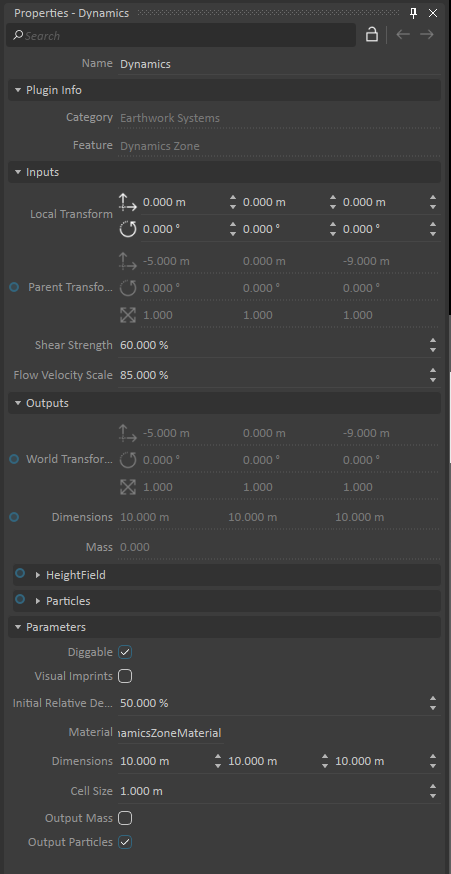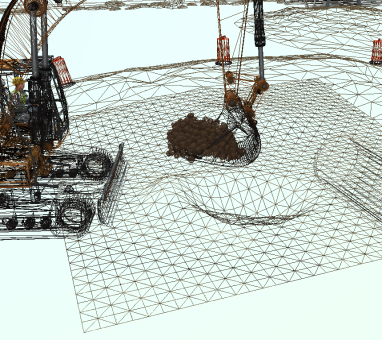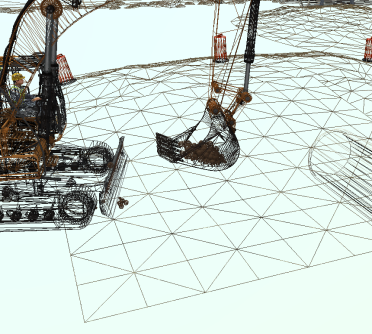Earthwork Systems Tutorial 3 : Soil Parameters
In this tutorial, users will learn the various characteristics of soil that can be simulated with Vortex® Studio's earthworks physics.
Prerequisites
You must have Vortex Studio and the Vortex Studio Samples installed to be able to complete this tutorial. Additionally, you must have completed Earthworks Training Module 2: Creating an Earthworks Zone
Configuring Soil Types
- Under the Earthwork Systems folder, select Soil Materials.
In the properties, change the Soil Material Preset to Clay in the drop-down menu.
Info
Changing the soil preset alters many dynamic values, such as gravimetric water content, friction coefficient, adhesion, damping coefficient, density, and more.- Under the Earthworks Zone extension, select Dynamics.
Change the Shear Strength to 60%. This will make the soil easier to dig through and increase the amount it will want to spread out.
Info
Reducing the Shear Strength value will make the soil slip more easily, hence reducing the angle of repose. Also, less force will be needed to cut through the soil. Lowering the shear strength to 0% will cause the entire soil to immediately start spreading out and only come to rest once it reaches a flat state. This can be done at runtime and is useful in certain earthmoving training scenarios. Setting the shear strength to any value between 0% and 100% will scale the stable slope angles of the soil between the maximum angle of repose possible for that soil type and completely flat, as shown in the following figure.- Change the Flow Velocity Scale to 85%. This will make the particles flow at a slightly slower rate.
Under Parameters, change the Initial Relative Density to 50%. This will make the soil less dense and easier to dig through. Activate the "Accessory" view by right clicking on the eye next to the top-level Scene extension to see the effect of changing this value.
Under Parameters, change the Cell Size to 0.25 m. This will make the mesh used for soil calculations slightly larger, which will lower the computational requirements. This can be useful if you are running into performance and frame rate issues when running earthworks.
0.25 m Cell Size
1 m Cell Size
- Start the simulation and notice the subtle differences in how the soil reacts to the bucket of the excavator.


